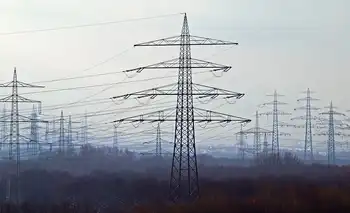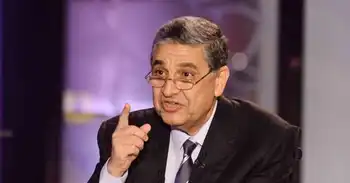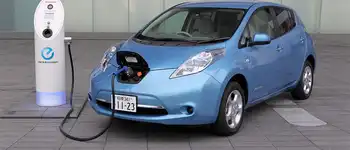Canadian Power Brokers Look to Transmit Electricity Points South
As premiers from eastern Canada and New England discussed the regionÂ’s energy issues at a conference in Halifax, Nova Scotia, Shumlin said he found himself sitting, figuratively speaking, with Quebec on one side and Newfoundland on the other.
Both provinces are renowned as hydro-power leviathans: Between them, theyÂ’ve committed over C$50 billion in the near future to a level of generating capacity not seen in Canada since the James Bay Project. Both provinces hope to export that power to the metropolitan Northeast, despite the fact that neither governmental entity has the means to transmit it. During the conference, both provinces were bidding for ownership of VermontÂ’s largest electric utility, Central Vermont Public Service Corp.
Although discussions about transmission corridors through Vermont arenÂ’t new, the consolidation of two-thirds of VermontÂ’s electrical market under a Montreal company has reignited speculation on whether Canadian companies are eying the state to access southern New England markets.
So far, all parties deny any plans for transmission development other than business-as-usual grid updates for reliability. “I would suspect transmission is not part of [Gaz Metro’s] agenda,” Shumlin told reporters, a suspicion that Gaz Metro has confirmed.
Kerrick Johnson, spokesman for VELCO, Vermont’s transmission utility, is adamant that no such plans have surfaced at his company. Increasing imports, he said, would require upgrades or new development. And while no one’s yet approached VELCO, he said discussions over the past few years have made it “quite clear that there may be a role for Vermont.”
The governor reported that conference attendees were “aggressively working” with him on transmission issues. Regional grid operator ISO-New England, a major presenter in Halifax, is supporting the governors with a variety of studies, some of which look at “tapping into Canada’s renewable development.”
North of VermontÂ’s border, Hydro-Quebec is developing or planning for over 10,000 MW of new generation, as well as connections to high-voltage transmission lines through New Hampshire and New York. Any connection between Vermont and Newfoundland would likely go through Hydro-Quebec lines, and the two provinces have a long history of clashing on energy relations.
In 2009, when the U.S. passed legislation to encourage the use of renewable energy among electric utilities, Hydro-Quebec announced C$10.4 billion in new hydro plants and $7.8 billion in transmission projects, including connections to wind farms. The 3700 MW in new hydro build-outs follow a government-run energy strategy, some of which will go online shortly. Hydro-Quebec also sought 4000 MW in wind-power, provided through its own wind farms or calls for tenders Gaz Metro will provide some of that wind power.
Hydro-Quebec is also involved in QuebecÂ’s more recent Northern Plan. As polar ice melts, Quebec intends to tap newly available hydro and mining resources along its northern borders. Of the Northern PlanÂ’s C$80 billion in public and private investment, C$47 billion is earmarked for renewable energy to churn out some 3500 MW of additional hydro capacity.
“Hydro-Quebec is committed to a long-term strategy of expanding its hydro-electric generation fleet and increasing its electricity exports,” wrote Ariane Conner, a Hydro-Quebec spokesperson, in an email.
Exports are a significant boon to Hydro-Quebec. According to Hydro-Quebec’s 2009-2013 Strategic Plan, Hydro-Quebec Production’s net exports in 2008 accounted for 8 percent of their sales volume C$977 million but 32 percent of the company’s net income. By 2013, it continues, Hydro-Quebec Production’s net exports will actually drop in net revenue to $915 million–“export volume will increase significantly…while the average price of exports will fall, given the forecast price of natural gas”–but that will comprise 12 percent of their sales volume and 38 percent of Hydro-Quebec’s net income.
The company’s Strategic Plan calls for an increase in exports to the northeastern United States and Ontario. “In line with this strategy, Hydro-Quebec inaugurated a new 1250 MW interconnection with Ontario in 2009,” wrote Conner, about one of a handful of interconnections between the provinces. According to the Hydro-Quebec’s Strategic Plan, Ontario is key to “markets in western New York state and the U.S. Midwest.”
Hydro-Quebec is currently fighting to build a 1200 MW interconnection with New Hampshire. In partnership with Northeast Utilities, it would develop a so-called “economic” transmission line running the length of the state, designed to shuttle electricity to Boston’s markets. Hydro-Quebec signed a 40-year power purchase deal with Northeast Utilities and NSTAR, which await approval to merge.
In New York, a proposed transmission line would run underwater the length of Lake Champlain and down the Hudson to New York City. The Champlain Hudson Power Express would be built by TorontoÂ’s Transmission Developers, Inc., linking New York City to a 1,000 MW Hydro-Quebec interconnection.
Gaz Metro has stated in a 2009 Annual Report that it is “well-positioned to assert [its] expertise” in the consolidation of Vermont’s utilities. Vermont’s Green Mountain Power is a Gaz Metro subsidiary, as is Vermont Gas Systems, the sole provider of natural gas in Vermont. If the CVPS merger is approved, the Readsboro and Vermont Marble electric utilities will also fall under Gaz Metro ownership.
Gaz Metro will retain a 40 percent share of VELCO after granting the State of Vermont a 30 percent stake, which the state will use to generate funds for a low-income assistance program.
As outlined in a previous story on VTDigger.org, a majority of Gaz Metro is owned by The Caisse de Depot et Placement du Quebec known as The Caisse, an international public pension investment firm whose board is appointed by the government of Quebec. The chairman of the board for The Caisse, a former Gaz Metro executive named Robert Tessier, is also chairman of the board for Green Mountain Power.
The Government of Quebec’s 2010 official “U.S. Strategy” projects electricity consumption in the U.S. to increase by around 25 percent by 2030, and states that it must “make sure” that U.S. policies encourage a Quebec supply of electricity. Four points are laid out, including the export of “water-generated electricity” from Quebec, full use of existing supply infrastructure, the installation of new export corridors, and the signing of long-term contracts.
The government of Quebec is also sole shareholder of Hydro-Quebec, the provincial power utility whose 34,490 MW hydro-electric generation ranks Quebec fourth in the world for hydro generation. Hydro-Quebec paid the government of Quebec a dividend of C$1.89 billion in 2010, according to The Globe and Mail.
Many utilities in Vermont, including CVPS and GMP, signed a 26-year contract with Hydro-Quebec last August for portions of up to 225 MW of power, slated to begin in 2012. VermontÂ’s peak usage has hovered around 1,000 MW for the past few years.
Hydro-Quebec owned half of Gaz Metro beginning in 1997 through a utilities holding company called Noverco, and sold to The Caisse in 2004. This is roughly the same amount of time Andre Caille, former CEO of Gaz Metro, was hired as Hydro-QuebecÂ’s CEO. CailleÂ’s successor, Thierry Vandal, was also a Gaz Metro executive before he assumed leadership of Hydro-Quebec in April of 2005. The head of Hydro-QuebecÂ’s transmission wing, TransEnergie, is Andre Boulanger, also a former Gaz Metro executive.
Gaz Metro says it’s not the company’s role to discuss transmission upgrades or developments. “All discussions regarding the development of Vermont’s transmission system is the responsibility of VELCO,” responded Jean Charles Robillard, spokesperson for Gaz Metro. “If any discussions are indeed taking place on that subject, VELCO is the forum for these discussions.”
Kerrick Johnson of VELCO was adamant: “No. None of the expressed interest [in transmission] has been translated in any way into a specific project being planned or discussed.” A so-called economic transmission development, said Johnson, would arise with a transmission developer, not VELCO, as was seen in New Hampshire and New York.
Hydro-Quebec, asked if they were considering a transmission project through Vermont, either directly or through partnership, gave this response: “At this time, Hydro-Quebec TransEnergie, the transmission provider in Quebec, has received no requests for new transmission between Quebec and Vermont.”
Canadian provinces are “running out of time” to get power supply to the New England market, Connecticut governor Dannel Malloy told reporters just after the NEG-ECP conference in Halifax. Non-Canadian investors, he said, are ready to jump in “because of the lack of direct discussion and belief that that product is going to be delivered in a timely fashion.”
Like Gov. Shumlin’s recent calls for more planning on Vermont’s ability to transmit Canadian power south, which he says would garner better electric rates for the state, Johnson sees the need for more study. “It makes sense for Vermont to think comprehensively and creatively on what benefit we can capture for Vermonters in matching supply with demand,” he said.
ISO-New England, the region’s bulk electricity grid overseer, was a major player at this year’s Halifax conference. They’ve been working with New England governors for years on planning for the region’s infrastructure to carry power from new renewable plants — mostly wind farms — around New England.
Ellen Foley, spokesperson for ISO-NE, said her organization is working with New England governors to meet a regional goal procuring 30 percent of New EnglandÂ’s power from renewable generation by 2030. The current emphasis is to increase the gridÂ’s capacity and connections with wind generation and support the flow of renewables. Among the plans that ISO-NE is analyzing is up to 12,000 MW of new wind generation serviced by a 4,300-mile inter-New England transmission loop, some of which could go through Vermont.
“It also considers tapping into Canada’s renewable development,” she said. A report presented by ISO-NE to the NEG-ECP conference found that the Northern Pass project, as well as a route from New Brunswick through Maine, could each provide 11 percent of New England’s energy, according to the group.
Johnson of VELCO says that future transmission projects do not necessarily mean economic transmission projects, the type that most efficiently carry power over long distances. “Ninety percent of our work is reliability, to ensure our grid meets federal performance standards,” he said, adding that Vermont has no economic transmission system but does serve as a connection between Quebec and Massachusetts.
Were an economic transmission project such as New Hampshire’s Northern Pass proposed in Vermont, it would require a substantial amount of backing, said Johnson. “Quite honestly, those economic projects are much riskier and can run into trouble. We’ve seen some of the trouble with the Northern Pass. When you’re going to economic transmission, its a much higher amount of risk, a much higher amount of capital.”
Shumlin has said that the development of economic transmission lines in Vermont would garner cheap rates for VermontÂ’s electric utilities when they sign contracts with Canadian companies like Hydro-Quebec.
While Johnson notes that increasing the reliability of Vermont’s current grid to transmit Canadian power to New England is possible, an engineer with the Department of Public Service said a new, direct-current line is the likelier candidate. The state transmission lines weren’t designed for that type of demand, and upgrading them “wouldn’t be terribly easy to do.”
A direct-current line, were it proposed, could present an additional problem for Vermont’s smaller, independent utilities. “If you’re talking about a direct- current line,” said Johnson, “there are very few on-ramps because of the expense,” meaning that utilities wouldn’t necessarily have direct access to the system. “That would be a risk,” said Johnson, “and would have to be thoroughly explored” during review by the Public Service Board and the Federal Energy Regulatory Commission.
For the time being, however, nothing is on the table. “Thus far, no one on VELCO’s board has said we’re interested in building this,” said Johnson.
Related News

New England Is Burning the Most Oil for Electricity Since 2018
BOSTON - New England is relying on oil-fired generators for the most electricity since 2018 as a frigid blast boosts demand for power and natural gas prices soar.
Oil generators were producing more than 4,200 megawatts early Thursday, accounting for about a quarter of the grid’s power supply, according to ISO New England. That was the most since Jan. 6, 2018, when oil plants produced as much as 6.4 gigawatts, or 32% of the grid’s output, said Wood Mackenzie analyst Margaret Cashman.
Oil is typically used only when demand spikes, because of higher costs and emissions concerns. Consumption has been consistently…





